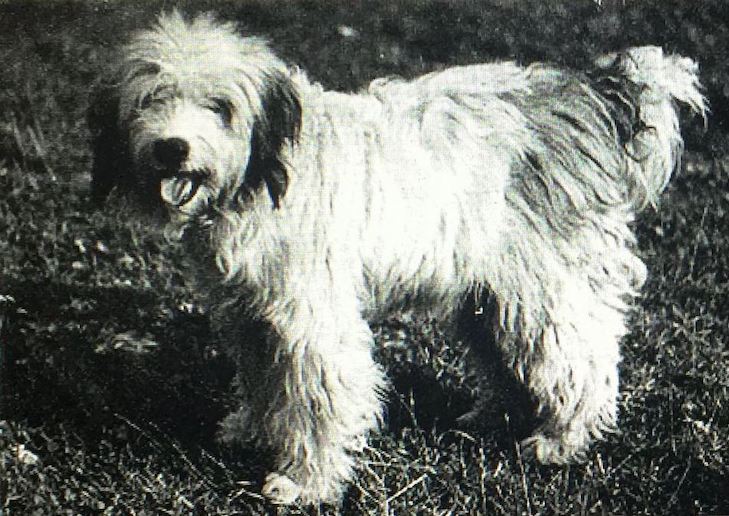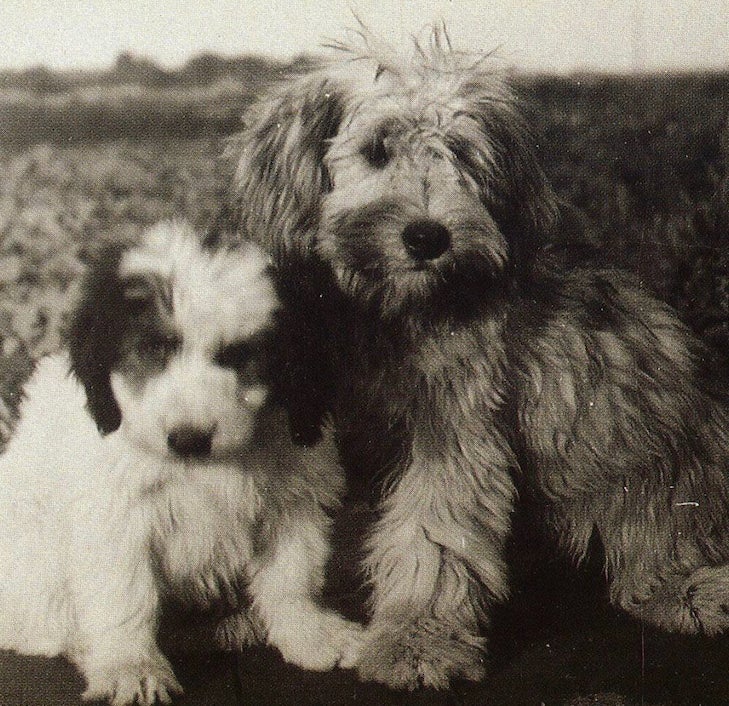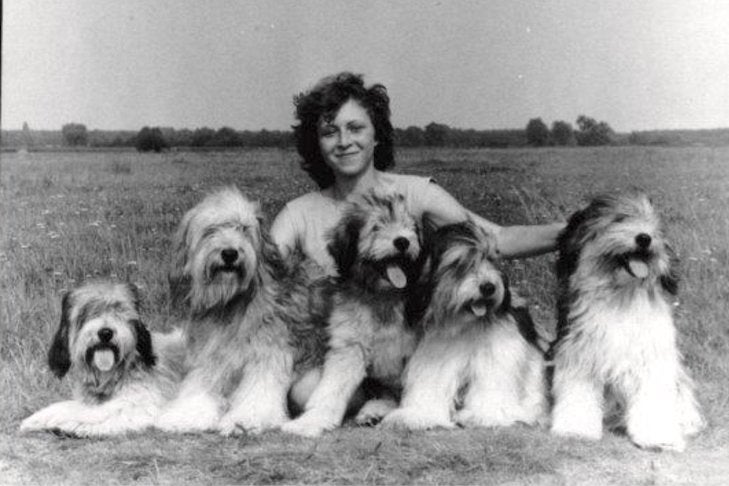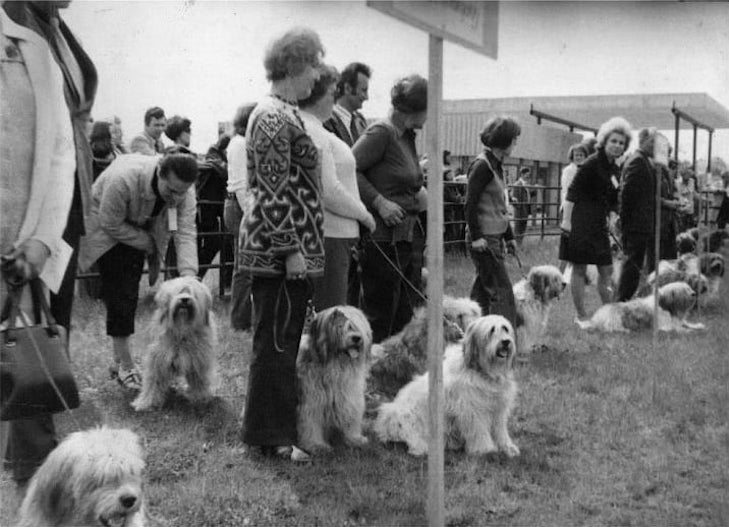This is not just another shaggy-dog story.
Also known as the Polski Owczarek Nizinny, or PON for those of us who are Slavicly-challenged, the hearty Polish Lowland Sheepdog joined the Herding Group and became AKC-recognized in 2001. On the cuteness scale alone, it was no surprise that this dog stirred up a lot of enthusiasm in the United States.
In Poland, the news that the breed had been accepted was a major boost to national pride. “Every country in the world had accepted this breed in the herding group, except the United States,” said breeder-judge Betty Augustowski, who was also president of the American Polish Lowland Sheepdog Club. “Years ago, when I went to Poland to buy some PONs, I made a promise to the breeder – the same woman who helped rebuild the breed after World War II – that before she died she would see the breed invited into the AKC.”
The PON has shown itself to be a survivor. Like the people of Poland, it has endured two world wars, decades-long occupations, economic hardship, and communism. The breed has proven to be as strong and stalwart as the people who developed and nurtured them.
“Before the Iron Curtain fell, we visited a dog show in Poland and the environment was so different,” Augustowski recalled. “The dogs came straight from the field and were often led down the runway with just a rope around their neck. But the dogs walked around as if that rope was a gold lead.”

Deep Roots
The PON – like many other heavily coated breeds seen today – descended from dogs developed in Central Asia, such as the Tibetan Mastiff, Tibetan Spaniel, Lhasa Apso, and Tibetan Terrier. Since the Tibetans were traders, their dogs, along with silks and spices, made their way across Asia and into Eastern Europe. When the Huns moved across Europe in the fourth century, they brought with them sheepdogs (similar, perhaps, to the Pulik) which were then interbred with local stock to produce working dogs with specific functions.
The PON found a home in Poland as a herding dog. Larger dogs, like the present-day Polish Tatra Dog, frightened the sheep and were too aggressive with the lambs. The Official Book of the Polish Lowland Sheepdog provides a description of the breed’s basic qualities: “PONs exhibit certain basic characteristics of the smaller sheepdog: a tendency for a squarely-built body; a smooth, efficient trot; a strong, long, protective coat; a loyal personality with strong herding instincts; a suspicion of strangers; a highly developed sense of territory; and a strong sense of independence. These dogs greatly helped people with herding work, while leaving space for the larger dogs to protect the livestock from wild animals.”
The breed’s influence on dogdom is surprising. In 1514, a Polish ship sailed from Gdansk to Scotland, bearing a cargo of grain to exchange for Scottish sheep. The ship also carried six PONs to help move the sheep. Impressed with the dogs’ working ability, a Scottish shepherd asked to make an exchange, and a deal was struck: a prize horned-ram and a ewe for two females and one male PON. It is believed that these three dogs were the ancestors of the Bearded Collie.

After World War I, when Poland gained independence after a long period of occupation, national pride was renewed, and subsequently there was increased regard for purebred Polish animals. The Countess Maria J. Czentwertynska Grocholska began to selectively breed PONs for type and appearance. In 1924, her dogs were shown in Warsaw at the Show of Poultry, Pigeons, and Dogs. From her stock, other breedings were begun, and dog enthusiasts tried to establish and register purebred Polish breeds. But in 1939, just as the registry was up and running, Germany invaded Poland. The Second World War began, and all dog-related activities in Poland were halted.
During the war, however, one PON managed to gain attention. Legend has it that a heroic PON bitch named Psyche saved the lives of hundreds of Poles. Psyche was able to sense when bombs were about to drop on the apartment houses of Warsaw. She would start barking minutes before the air raids, giving people the chance to rush to underground shelters as their homes were demolished. (Psyche’s valuable ability was probably responsible for the preservation of her own life, too, as the Poles in Warsaw were starving and generally unable to keep pets.)
After the war, interest in the PON grew and the Polish Kennel Club was formed in 1948. The club attended to the rescue and re-establishment of the breed, searching out Polish sheepdogs among farmers in the northern region of the country. The club also took on the responsibility of selecting high-quality dogs for pre-registration. After three generations of known ancestors, a dog could be registered and receive an official pedigree. The first kennel to register PONs was, in 1957, that of Babia Weis, who had been breeding the dogs since 1946. Another important figure in the establishment of the breed is veterinarian Danuta Hryniewicz, who owned Smok (Polish for dragon). Years after she acquired Smok, Hryniewicz came across an article, published before the war, that lauded PONs and led her to believe that her dog was the epitome of the breed. Smok was the standard to which Hryniewicz bred and the type to be emulated by PON breeders. The official standard for the PON was accepted by the Polish Kennel Club in 1959.

It took about 15 years after World War II to establish several top-quality dogs for breeding. The first international dog show at which PONs were shown was in 1965, at the World Dog Show in Czechoslovakia. The Fédération Cynologique Internationale officially recognized the breed in 1959.
U.S. Interest Grows
Betty Augustowski spearheaded the movement to get publicity for the PON in the United States. Augustowski and her husband, Kaz, both proud Polish-Americans, were interested in dog shows and wanted to promote a breed from the land of their ancestors. When her husband spotted an ad for a Polish Lowland Sheepdog — a breed they had never heard of – in a dog magazine, the two jumped at the chance to meet the breeder, Moira Morrison, who was instrumental in getting the Bearded Collie recognized by the AKC in 1977. Morrison had made contact with rare-breed enthusiasts in Europe and had visited Poland to bring home PONs for breedings. Soon after the Augustowskis acquired their first 4 – month-old PON puppy, named Pan Vadek, they began their campaign to introduce the small sheepdog to Americans. Vladek was entered in every rare-breed match the Augustowskis could get to.
Betty carried copies of the standard with her, hoping to ignite interest in the breed. Several champions and breedings later, Augustowski helped form the American Polski Owczarek Nizinny Club in 1987 with eight founding members. Club membership grew to more than 300 by 2001.

Lions and Tigers and PONs, Oh My!
In the early 2000s, two lucky PONs lived the life of luxury in Las Vegas with celebrity owners, the performing duo of Siegfried and Roy. “I didn’t want this dog living with lions and tigers,” joked Finch-Cirtwell, who sold the pair one of the pups (the second was bred by Donna Gray). But after reassuring phone calls with Roy and his associates, the breeders sold the two illusionists the puppies. Says Finch-Cirtwell.
And no, the duo’s PONs were not used in any elaborate magic tricks involving white tigers, flaming hoops, and throbbing music. Though given this breed’s hardiness and courage, they probably could be.

